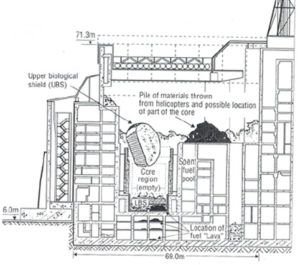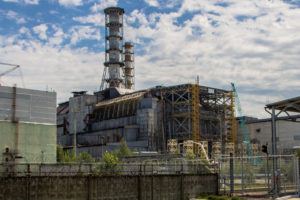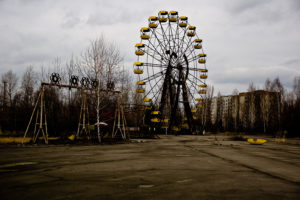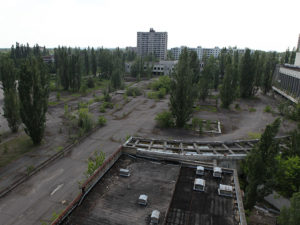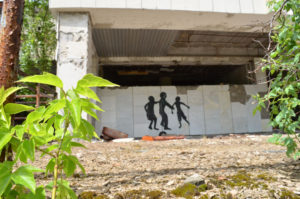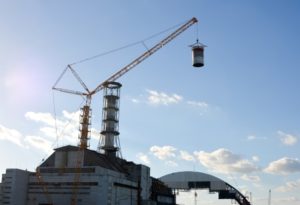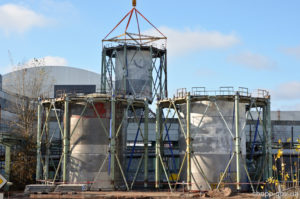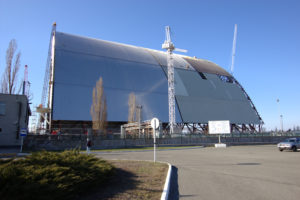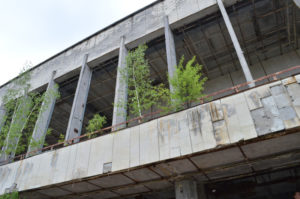On the morning of Saturday, April 26th, 1986, at 1:23 AM local time just outside the city of Pripyat, Ukraine, reactor #4 of the Chernobyl Nuclear Power Station exploded, releasing several tons of radioactive material into the atmosphere, covering both the area immediately around the power station but also depositing dangerous amounts of material in the surrounding countryside for many hundreds of kilometers around. Indeed, the Western world was alerted to this disaster via the increase in radiation detected at varying nuclear power plants throughout Europe, which could only be traced to an external source matching a nuclear plant disaster.
The disaster was caused by human error. Error in the design of the RBMK nuclear reactor of the plant which made it dangerous to operate under certain conditions. Error in the government of the time ordering a test which put the reactor into a situation that stimulated these dangers. Error on plant management to go ahead with these tests anyway, at night, with a skeleton crew instead of the normal daytime plant workers. Error to experiment with an active nuclear reactor.
It wasn’t long before the world knew what had happened, and the rest, as they say, is history. The nearby city of Pripyat was evacuated and left virtually untouched until scavengers began raiding it for whatever could be of use. Vast areas of Northern Ukraine and Belarus were rendered uninhabitable, and like Pripyat, were abandoned to nature.
While there were only 31 immediate deaths due to the explosion of Reactor 4, the deaths due to cancer in the areas affected by this disaster easily number into the thousands. While cleanup efforts have been underway since the initial explosion, and medical resources have been increased in the affected areas, the effects of this disaster are still being seen 3 decades later in the form of cancers and birth defects.
The power station continued to produce electricity until the end of 1999, when reactor number 3, the last active reactor at the Chernobyl Nuclear Power Station, was finally shut down; just on the other side of that same building still lie the radioactive remains of it’s twin, Reactor 4.
To this day, Pripyat still sits abandoned. It has been scavenged, vandalized, graffitied, and generally left to rot; even with a meager security force guarding the area, people still sneak into the city and explore, at their own risk. 30 years has not been kind to the city, with many buildings starting to suffer the ravages of time, with inevitable collapse looking to come sooner, rather than later.
The Chernobyl Nuclear Power Plant itself still stands, inactive since the shutdown of it’s reactors in 1991, 1996, and 2000. A confinement structure is being built that will better seal the reactor remains from the outside world. It’s not intended to be an airtight structure, but only to keep the solid waste separated from the environment, and to replace the severely aged and fragile “sarcophagus” that was built following the disaster to contain the waste originally.
The plant itself has begun to change, too. The iconic air vent stack on top of the reactor 3 and 4 building has been removed, with a smaller vent stack built a ways away. This was done to clear the way for the Confinement structure to be moved over the reactor remains. From there, the old Sarcophagus structure will be carefully demolished, and eventually the rest of the Chernobyl Nuclear Power Plant will also be demolished and the area cleaned, with the housed remains of reactor 4 lasting for generations, still too radioactively “hot” to be removed.
Something about Chernobyl has always interested me to the point of me feeling a connection to the disaster. While I am a supporter of Nuclear Power, I fully realize and understand how dangerous it can be. It is the fault of human error that it even happened, but it is a error that has a legacy that will span decades more into the future.
The Chernobyl Exclusion Zone is an amazing time capsule of the 1980’s Soviet Union. It has become also somewhat of a nature preserve, and while some people have moved back into the area, cities like Pripyat remain abandoned fragments, almost symbolic themselves of the ruins of the once might Soviet empire.
For me, a fascinating, if terrifying also, even in history. There have even been video games based on the disaster, and it’s surrounding area (loosely, but still, they are based on that area), movies, and more; the reality of the event, however, is amazing to read upon, and even more incredible to see in film and photos.
See Also:
https://en.wikipedia.org/wiki/Chernobyl_disaster
https://en.wikipedia.org/wiki/Chernobyl_Nuclear_Power_Plant
https://en.wikipedia.org/wiki/Chernobyl_New_Safe_Confinement
https://en.wikipedia.org/wiki/RBMK
https://www.xadara.com/the-chernobyl-disaster-27-years-later/

